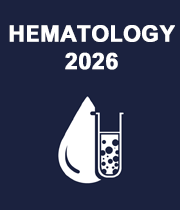Title : Covid-19 and erythrocyte groups
Abstract:
Introduction. ABO blood group antigens are related with pandemics of infectious diseases. The specific distribution of blood group antigens in the world is the result of the selectivity of Natural Selection. The several studies suggested also the possible link with Sars-Cov 2 viral infection and Rh factor. O, Rh- blood group showed a fairly low rate of viral infection. Individuals with an Rh-positive blood group are more vulnerable to SARS-CoV-2 viral infection. The current study aims to find the possible relationship between ABO and Rh blood groups and the susceptibility of Sars-cov2 viral infection. The result were compared with ABO and Rh blood group phenotypes in healthy and post-infected individuals will give us an opportunity to identify viral infection sensitive and infection-resistant phenotypes, providing additional information in terms of risk group assessment and preventive measures.
Reaserch material and methods. A total of 447 blood samples have been studied. Among 333 blood samples belonged to the post-infected with SARS-Cov 2 virus and rest 114 blood samples were from healthy controls for the current research. The research material has been collected within fourth months (28.01.2021- 30.04.2021) time period. Immuno-serological forward and reverse methods with anti-A, anti-B; anti-AB, anti-C, anti-c, anti-D, anti-E, and anti-e monoclonal antibodies have been used for ABO and Rh blood typing. One-variable χ2 statistical analyses have been used for data processing, respectively.
Result. Eight combinations of ABO and Rh systems were studied in post-infected and control groups. Based on obtained results, above mentioned phenotypic combinations were also unequally distributed in post infected and control groups, except A(II), Rh+ phenotypic combination, that occurred with the highest percentage in the group of post-infectious individuals. The prevalence equals to 41.4%, which is 11.6% higher than in the control group of the same phenotype (Figure 2). That, once again confirms the high susceptibility of A(II), Rh+ group to Sars-Cov 2 viral infection. In this particular case the χ2 criteria is 33.69, which is 2.3 times more than CV (df = 7), that is equal to 14.07. The chi-square criterion indicates the theoretically possible relationship between the two qualitative variables and the rejection of the null hypothesis (E = 0). The result is significant at p < .05
An interesting picture has been revealed in the case of O, Rh+ and O, Rh- phenotypic combination. The prevalence of the O, Rh+ phenotype in the control group is 42.9%, that is 9.9% higher than the prevalence rate of the same phenotype in the Sars-Cov 2 virus post-infectious group. O, Rh- phenotypic group is presented almost 1.4 times lower frequency in post-infectious individuals (control - 17.5%; post-infectious individuals - 11.1%).
Conclusion. O, Rh- phenotypic group is more resistance group to the infection, respectively.
Audience Takeaway:
- Based on such studies, risk groups can be identified and preventive measures can be developed to prevent infection
- When a person knows that she or he is a carrier of a susceptible phenotype to an infection, she/he will vaccinate for prevention
- Research is also important from the point of view of population genetics



